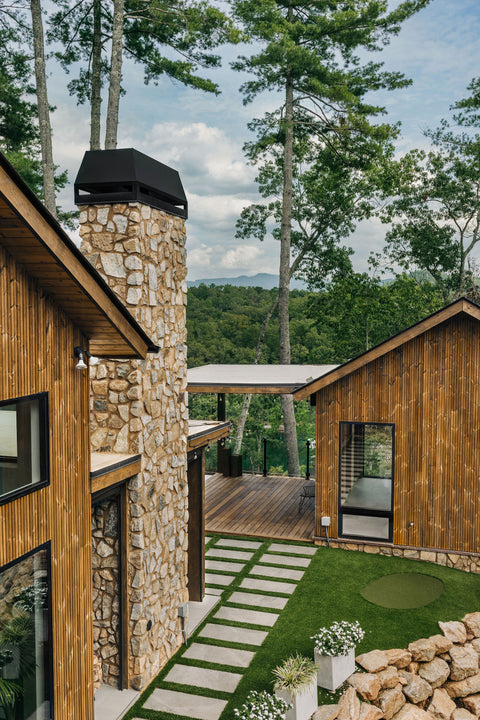Thermowood

Discover Thermowood: A Superior Choice for Modern Architecture
Thermowood, through its innovative production process and exceptional properties, represents the pinnacle of wood modification techniques, tailored for today's architectural needs. Dive into the details of Thermowood, its production, properties, maintenance, and the many ways it can enhance modern living spaces.
The Thermowood Process
Thermowood is produced using a unique heat treatment process, involving temperatures between 180°C and 220°C, combined with steam to protect the wood. This method transforms the physical and chemical structure of the wood, enhancing its durability, stability, and resistance to decay without the use of chemicals. The process also imparts a rich, deep color throughout the wood, enhancing its natural beauty.
Crucially, the Thermowood process is environmentally friendly, eschewing chemicals for natural elements: heat and steam. This not only reduces the environmental impact but also ensures the wood is non-toxic and safe for both indoor and outdoor use.
Properties of Thermowood
One of the standout features of Thermowood is its enhanced durability. The thermal modification process significantly increases the wood's resistance to decay and fungal growth by reducing its equilibrium moisture content. This makes Thermowood ideal for climates and settings where moisture levels might otherwise degrade conventional wood.
Thermowood exhibits superior dimensional stability. It resists warping and maintains its shape much better than untreated wood, even under fluctuating humidity conditions. This stability is crucial for applications like flooring and cladding where uniformity and precision are essential.
Beyond its functional benefits, Thermowood offers a unique aesthetic appeal. The heat treatment process deepens the wood's hue to a warm brown, which naturally weathers to a stylish silver-grey patina, offering a timeless charm to any façade or deck.
Maintenance and Care
Thermowood's robust nature means it requires minimal maintenance. Unlike traditional wood, it does not need regular treatments with oils or preservatives to maintain its durability or appearance.
To preserve the original brown color of Thermowood, surface treatments such as UV-protective oils can be applied. These treatments help maintain the aesthetic quality of the wood while adding an extra layer of protection against the elements.
Cleaning Thermowood is straightforward—regular washing with mild soapy water is sufficient to keep surfaces looking fresh. For any scratches or minor damage, simple sanding and re-application of surface treatments will suffice.
Applications of Thermowood
Thermowood is versatile, suitable for a wide range of applications. Its thermal and moisture-resistant properties make it ideal for exterior claddings, decking, and landscaping. Inside, it offers a luxurious option for saunas, panelling, and flooring, enhancing spaces with its warm and inviting aesthetic.
Dimensional Stability
Heat treatment significantly reduces the tangential and radial swelling of wood.
This reduction occurs because the heat modifies the wood's cell walls, decreasing the amount of hygroscopic hemicellulose, which in turn reduces the wood's ability to absorb moisture. By lowering the equilibrium moisture content and stabilizing the wood's dimensions, heat-treated wood, or thermowood, becomes highly suitable for use in building envelopes.
Enhanced stability means that thermowood maintains its shape and size even in fluctuating humidity and temperature conditions, making it an excellent choice for exterior cladding, decking, and other outdoor applications where consistent performance is critical.
